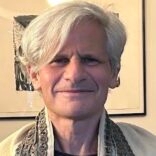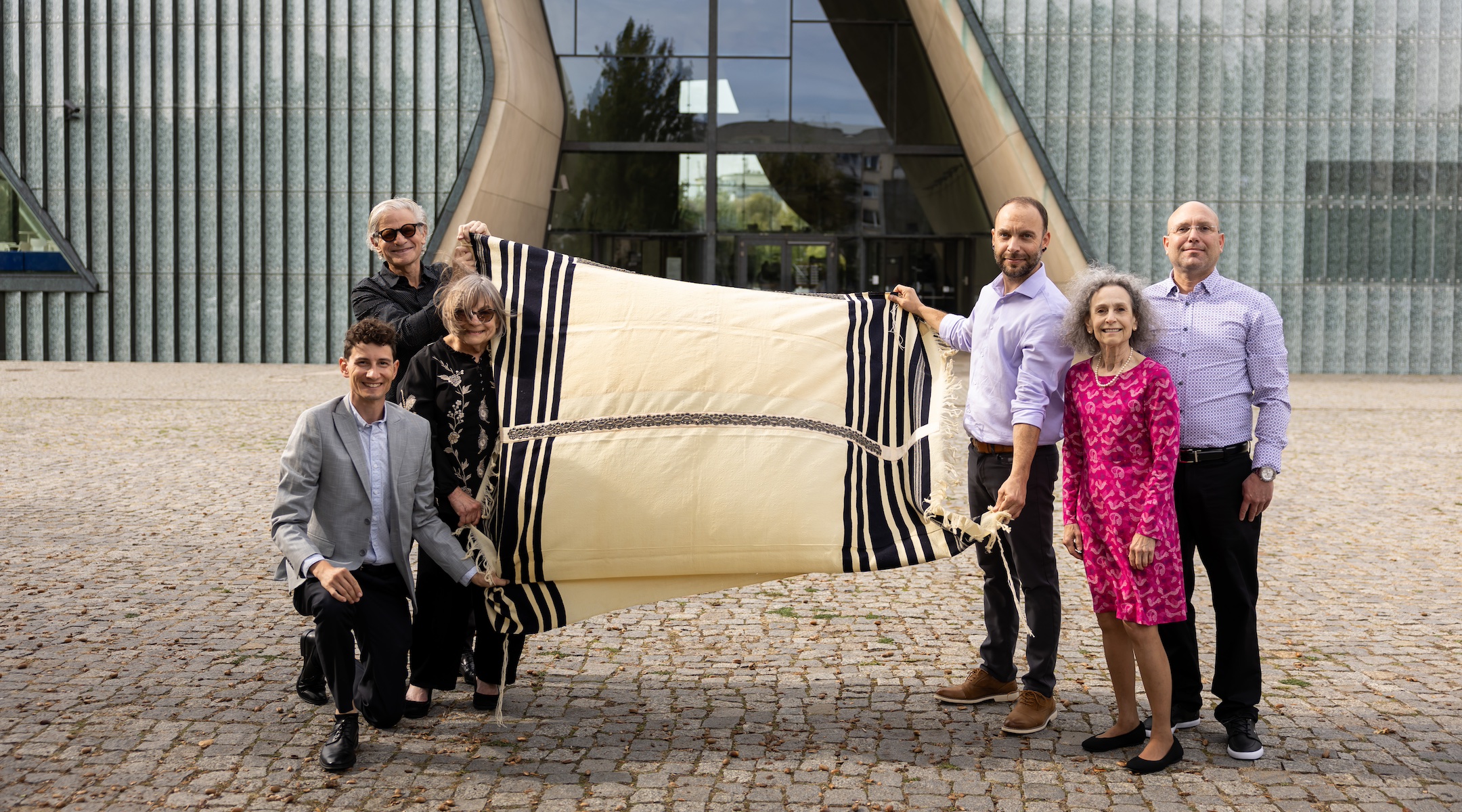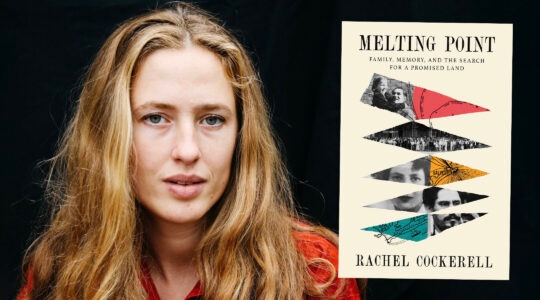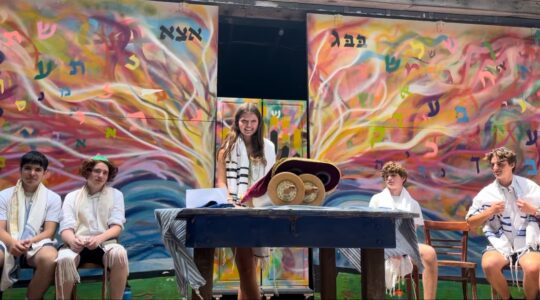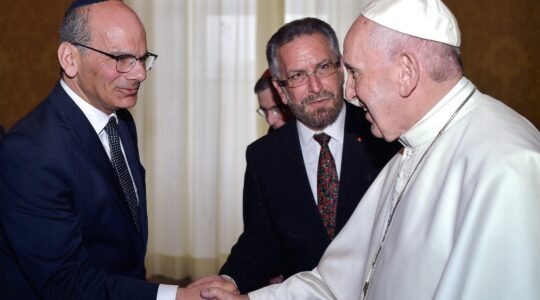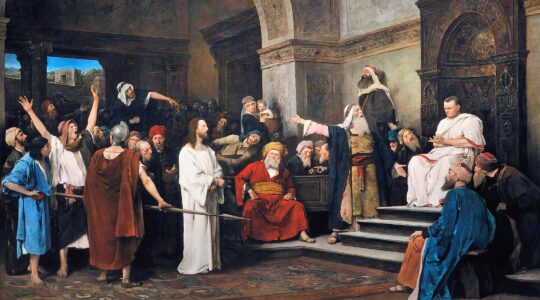Like Dave and Benji, the oddly matched cousins in Jesse Eisenberg’s new feature film, “A Real Pain,” I recently embarked with five of my American Jewish cousins on an unusual family heritage journey to Poland. We had never traveled together, but we were inspired by a powerful idea: bringing back to Poland a beautiful family heirloom — a Jewish prayer shawl, or tallis, that one of our ancestors brought to the United States nearly a century ago.
That ancestor was Max Lang, my great-grandfather on my mother’s side of the family. My older cousins had known Max as their grandfather. But like my younger cousins, I had never met him, as he had died before I was born in 1957. Even so, Max’s life story is a thread that binds us together as a family, because it was his initiative that created the basis for our family life in the United States.
Max was born in 1884 into a Hasidic family of bakers in Nowy Zmigrod, a small town now located in southeast Poland. At the age of 17, he emigrated to the United States and settled on the Lower East Side. When he first arrived in New York, he worked for two full years as a beker yingl, an apprentice baker, earning no pay. Instead, he was fed by the baker’s wife and allowed to sleep on a large sack of flour, using empty burlap bags for bedding.
In due time, Max found work that paid $4 a month and then went into business for himself. From the 1910s through the 1950s, he established successful bakeries across New York City, including one on Brooke Avenue in the Bronx and another on West 117th Street, just off Lenox Avenue in Harlem.
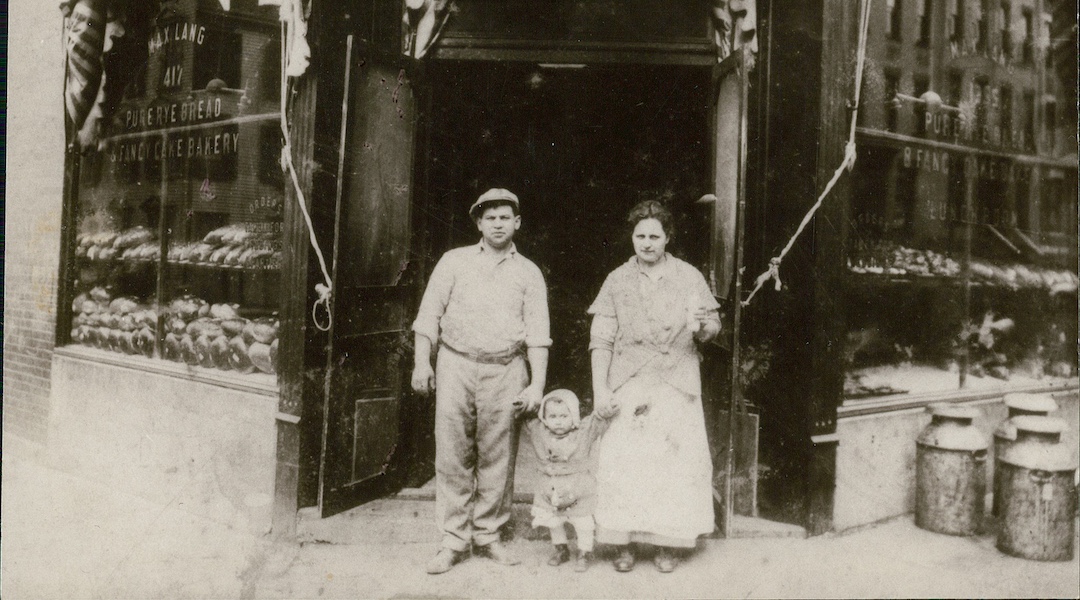
Max and Rose Lang and their son Leo stand in front of their first bakery at 417 Brooke Avenue in the Bronx circa 1915. (Collection of Stuart Schear)
Prosperous by the late 1920s, Max could afford to travel to his hometown in Poland to visit his large religious family. By that time, Max was no longer an observant Jew. In a photo from that trip, he appears clean-shaven and dressed like a “Yankee” in a fashionable suit and hat.
Max’s non-religiosity aside, during that visit his observant brother Pinkhas presented him with a gift — a magnificent tallis, which boasted a neckband, or atarah, embroidered with silver thread. Max returned to New York with the tallis, where it was seldom used, as synagogue worship was not part of his or his children’s lives.
When Max returned to New York, with the tallis in his luggage, he had no idea that he would never see his family again. In 1939, German forces occupied Nowy Zmigrod. On July 7, 1942, they murdered nearly all the town’s Jews, including Max’s cousins, in a nearby forest. After this terrible massacre, almost every physical remnant of Jewish life in Nowy Zmigrod was pillaged or destroyed. Max’s tallis, stowed safely in a dresser drawer in New York, suddenly became one of the few surviving relics from centuries of Jewish life in this town.
In 2023, I “friended” on Facebook some young Poles from Nowy Zmigrod who were interested in their town’s Jewish history. They helped me research my family history and encouraged me to visit the town in July, when local Christians hold an annual ceremony honoring the memory of the town’s Jews, gathering in the forest where the massacre had taken place. When I decided to attend, I remembered that my cousins had Max’s tallis, and I asked them if I could bring it with me to Nowy Zmigrod.
Even though I am not religious, I wore the tallis while speaking at the memorial, so that its beauty could represent the members of our large family who had been killed in the forest where we stood, including Jozef Lang and Raizele Lang. I also read from a description of the massacre, taken from testimony given to the Israeli Holocaust museum Yad Vashem by one of Max’s cousins, Szymon Lang, who had survived this atrocity and the Holocaust.
Upon my return from Poland, I organized a family Zoom to share the details of my visit. My cousins were moved by my renewed connection to our family history, especially after they read Szymon’s Yad Vashem testimony. I told them that the director of the local museum in Nowy Zmigrod had asked me to donate Max’s tallis to the town museum. My cousins found the idea intriguing, but, as I had seen how poorly this modest, under-resourced museum cared for its collection, we decided it was too risky to donate it there.
Still, the idea of returning Max’s tallis to Poland inspired us, and we decided to offer it to the POLIN Museum of the History of Polish Jews. Located in Warsaw, the museum is dedicated to telling the 1,000-year-history of the Jews of Poland in all its complexity. For centuries, Jews had thrived there, but they also faced brutal pogroms, blood libels, annual antisemitic pageants and, finally, mass murder.
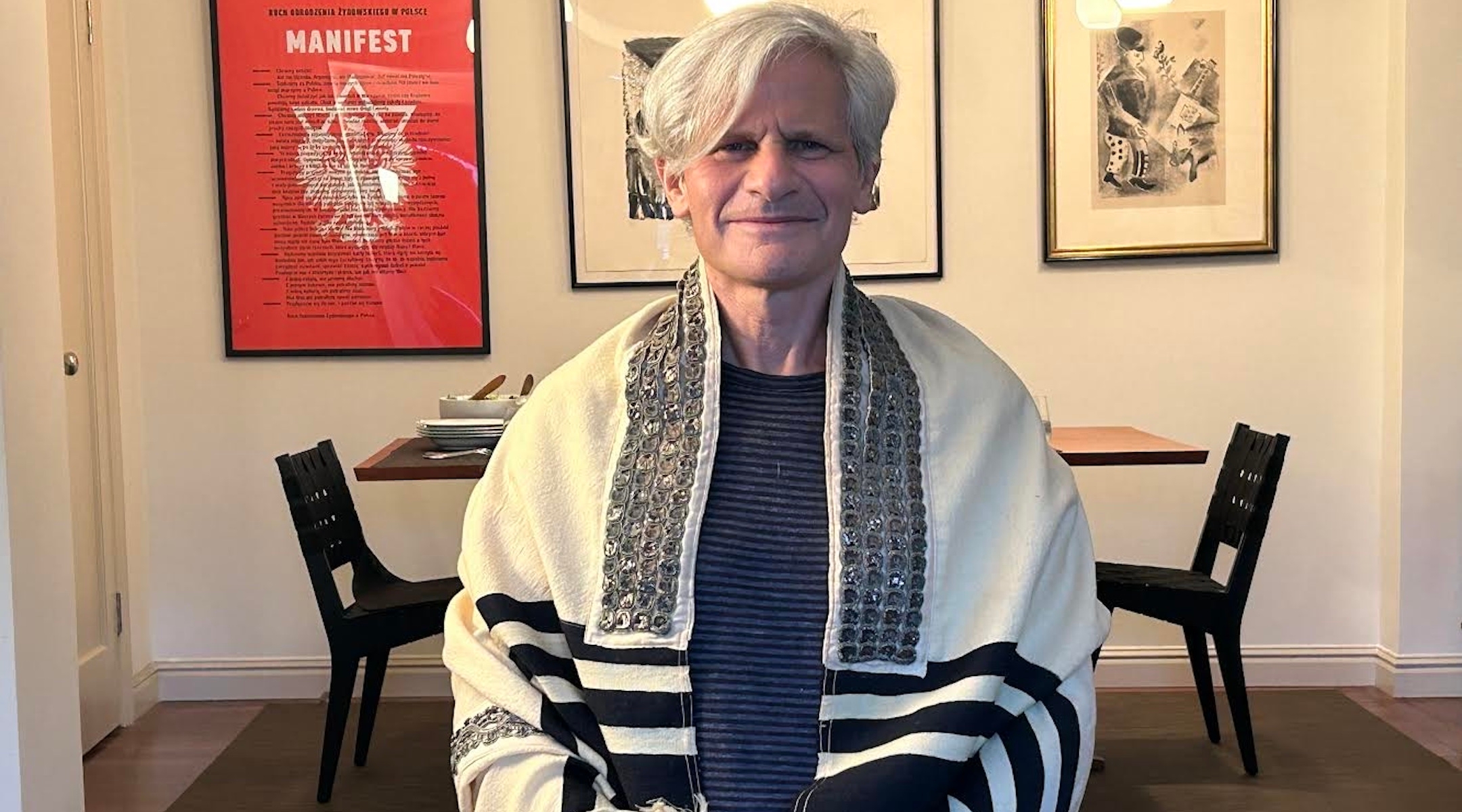
Stuart Schear, the author, wearing his great-grandfather’s tallis in his NYC apartment, just before his July 2023 trip to Nowy Zmigrod to participate in a memorial ceremony for the murdered Jews of the town. (Jeffrey Shandler)
Given this mixed history, we decided that donating Max’s tallis to POLIN made all the more sense, as the museum believes that sharing the history of Polish Jews makes Poland a more inclusive, multicultural society. Despite intolerant voices in Poland speaking against Jews, gay people, Roma, Muslims and Ukrainians, a significant and growing number of Poles have, for decades, taken a powerful interest in understanding their country’s Jewish past, which they view as a key to Poland’s future as an inclusive, multiethnic democracy. Given our family’s deeply felt commitment to Jewish dignity, to human rights for all people and to multiethnic democracies, my cousins and I concluded that POLIN was the perfect home for Max’s tallis.
Understandably, historians, journalists and a broad swath of American Jews have focused on Poles’ complicity in the Holocaust and their postwar antisemitism. However, we understand that these Poles’ anti-Jewish attitudes and actions are not the full story. That’s why we decided that, rather than leave Max’s tallis sitting in a drawer in the United States, we should make it available to the Poles who are curious about the millions of Jews who had once been their neighbors.
We are delighted that Max’s tallis will connect our family history with a new surge of interest in Jewish history among Poles. By sharing this tallis, we are playing a small role in healing some of the harsh history experienced by Polish Jews over the centuries and bridging the divide with contemporary Poles of good will, who are drawn to understanding this complex history.
The New York Jewish Week brings you the stories behind the headlines, keeping you connected to Jewish life in New York. Help sustain the reporting you trust by donating today.
